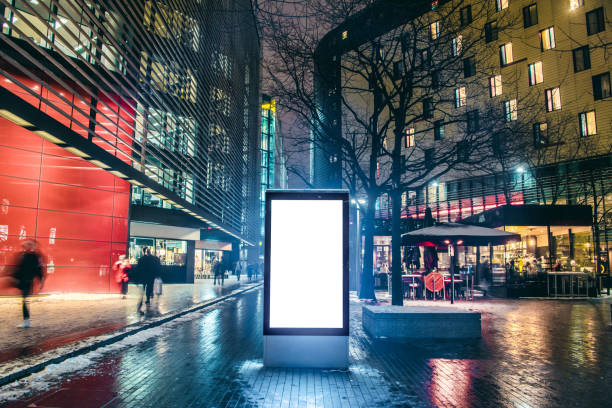In an era where our lives are increasingly dominated by digital screens and online platforms, the resilience of traditional marketing methods can be surprising. Yet, billboard advertising stands tall amidst the clamor of pixels and alerts, proving that sometimes size does matter. This anecdote of nostalgia isn’t just surviving—it’s thriving, as modern strategies and digital advancements breathe new life into these large-scale adverts.
Rediscovering Billboards: Blending Tradition with Modern Marketing
Billboards are part of the urban landscape, towering over highways and punctuating city skylines. They have a storied history in the advertising world, starting as simple wooden boards to the extravagant, high-tech digital displays of today. The secret to their endurance rests in their adaptability and sheer presence.
In some ways, billboards are the marketing chameleons, shifting in response to technological innovation and the tastes of the ever-changing consumer base. In the digital age, they incorporate the same principles of online marketing – eye-catching design, strategic placement, and tailored content – but on a grander scale.
Traditional billboards have one undeniable advantage: they cannot be turned off or ignored as easily as digital ads. A report by Nielsen revealed that 58% of consumers learned about a local event or establishment from a billboard, which is testament to their effectiveness.
Furthermore, the cost-effectiveness of billboard advertising is particularly appealing. For a static billboard, the cost per thousand impressions (CPM) is significantly lower than most digital ads, offering sustained visibility over a longer period. This tried and tested medium provides a competitive edge, especially when synergized with digital campaigns.
The Digital Facelift: How Technology Is Shaping Modern Billboards
The digitalization of billboards has opened a plethora of creative avenues. These are not the dusty, faded images of the past but rather, vibrant, dynamic displays capable of real-time updates, multimedia content, and even interactive elements. Digital billboards can rotate ads, allowing multiple advertisers to share space and costs, which makes billboard advertising accessible for budget-conscious businesses.
Another emerging trend is the integration of mobile technology with billboards. By employing QR codes or Near Field Communication (NFC), passersby can interact with the billboard’s content, instantly taking information with them on their smartphones. Advertisers can track these interactions, gaining insightful data to refine their strategies and enhance ROI.
The blend of out-of-home (OOH) advertising with social media campaigns has also revolutionized the billboard’s role in advertising. Campaigns can extend their reach beyond the physical location of the billboard by encouraging viewers to share their experiences online. This creates a multi-channel impact that leverages the strengths of both traditional and new media.
Location, Location, Location: The Importance of Strategic Placement
Despite the advances in technology, the location of a billboard remains critical. High-traffic areas, whether vehicular or pedestrian, maximize exposure, ensuring that the ad’s message reaches a broad audience. Selecting the right spot requires research and understanding of both the target demographic and the paths they frequently travel.
Billboards around transportation hubs like airports or train stations are goldmines for advertisers. They display messages to a captive audience, often at a time when these individuals are open to engagement, such as during travel downtimes. Moreover, billboards in entertainment or shopping districts capitalize on consumer moods that are aligned with spending and leisure activities.
Urban areas typically offer the highest density of potential viewers, but rural billboard placements offer value as well. These locations often serve as waypoints during long journeys, providing an exclusive audience with fewer distractions and a better chance at leaving a longer-lasting impression.
Creativity in Design: Capturing Attention Without Distraction
With a limited window of time to capture attention, billboard design demands creativity and clarity. Successful billboards combine bold visuals, succinct messaging, and a memorable call-to-action. The best designs tap into emotional triggers or make use of humor to ensure they linger in the memory long after the viewer has passed by.
One of the challenges is avoiding information overload or distraction, particularly for drivers. Regulations are in place to ensure that billboards are not hazardous and that they maintain a balance between being eye-catching and safe. As a rule of thumb, if a message cannot be digested in a few seconds, it’s probably too complex for a billboard.
Interactive and 3D billboards represent the pinnacle of engaging design. They break through the noise by offering something unique, whether it’s an optical illusion or a tactile experience. These types of billboards can quickly become landmarks in their own right, talked about and shared across social platforms, further amplifying their impact.
Measuring Success: Analytics and the Future of Billboard Advertising
One commonly cited challenge with traditional advertising forms is measurement. However, the digital evolution of billboards is changing this narrative. Sophisticated analytics, often similar to those used in online advertising, are now applied to gauge the performance of billboard ads.
With cameras and connectivity, billboard operators can collect data on passersby demographics and behavior, adjusting content for maximum relevance and engagement. Additionally, integration with mobile advertising and tracking codes provides a clearer picture of a campaign’s reach and conversion rates.
As these technologies continue to develop, advertisers will gain access to a level of campaign analytics akin to digital marketing. Such insights will help tailor OOH advertising to be more personal and targeted, a far cry from the generic mass marketing of yesterday’s billboards.
Conclusion
Billboard advertising’s embrace of digital technologies represents a transformative moment, one that combines the power of physical presence with the precision of digital marketing. By integrating interactivity, real-time content, and mobile integration, today’s billboards go beyond static images to offer personalized and compelling narratives.
